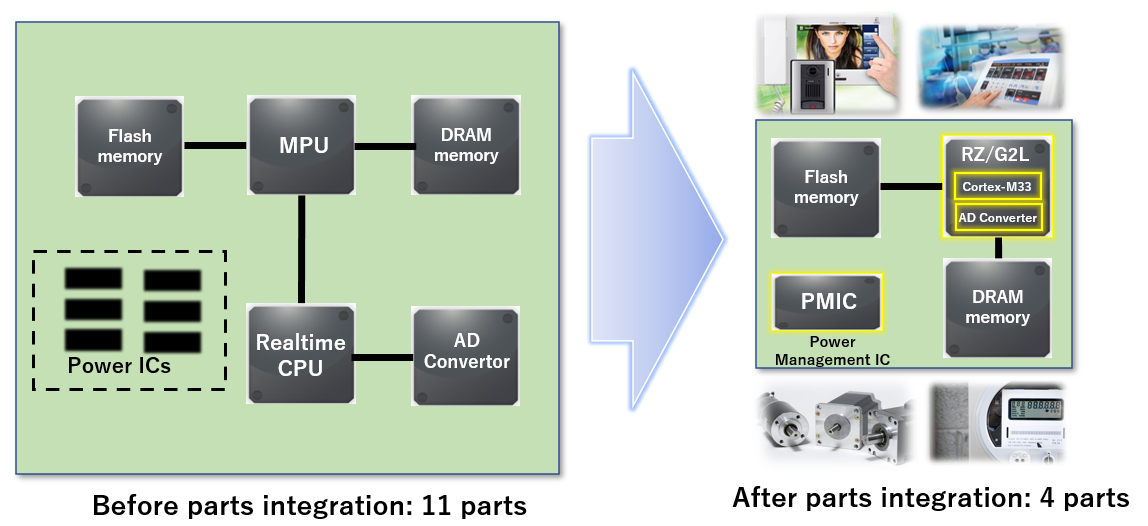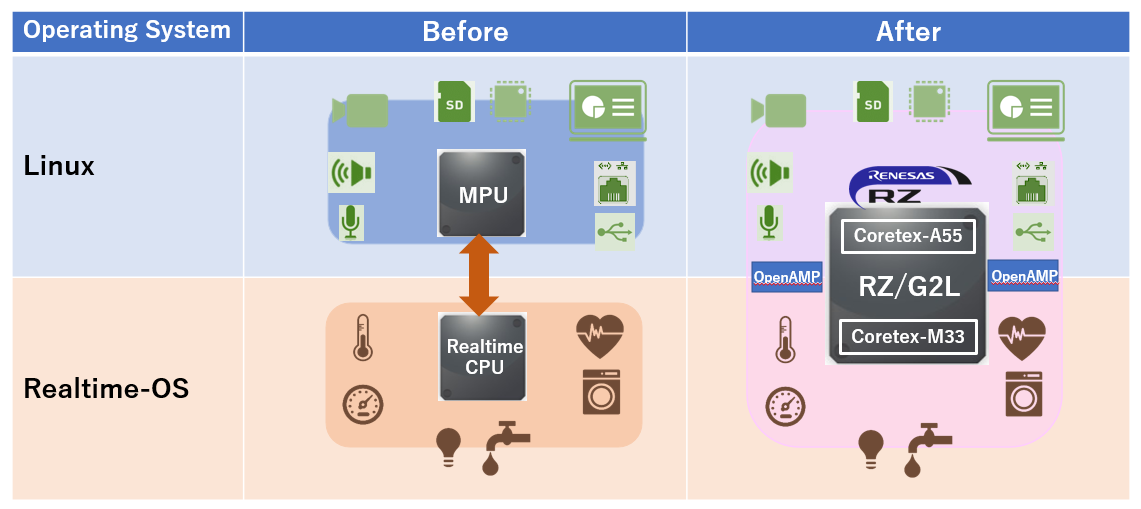Due to the multi and high functionality of entry-level equipment, the number of IC components used in equipment has been increasing recently.
For example, there is IoT equipment that collects various sensor information with a real-time CPU and connects to the network via an MPU. In addition, entry-level equipment on the market requires advanced features such as cameras for video capture and displays for a graphical user interface. Ten or more major IC components are required to realize these systems.
Increasing the number of components makes the PCB board size bigger and drives the cost up. Also, it makes the procurement risk of IC components higher. The impact of the global semiconductor shortage is making the risk more pronounced. In fact, just the shortage of one component can easily cause commercialization delays.

In order to avoid these cost-up and procurement risks, it is very important to reduce the number of IC components on the PCB while keeping multi and high functionality.
Therefore, RZ/G2L integrated Arm® Cortex®-A55 which handles advanced applications on Linux, Cortex-M33 which processes the data of several sensors in real-time, and an AD converter that can be directly connected to analog sensors inside.
In addition, we also provide the PMIC highly optimized for RZ/G2L that can make the design of a power supply system easy, instead of a very complex design composed of discrete components.
As a result, the number of components used in the system is reduced by about half, and the PCB board size is also reduced, which greatly contributes to BOM cost reduction.

Furthermore, we provide the software package for Cortex-M33 called the Flexible Software Package (FSP) and the Multi-OS Package which consists of the OpenAMP software framework which realizes communication between processers with RTOS and Linux. By using these packages, customers can easily develop the system coexisting with a feature-rich Linux and a real-time RTOS.
The FSP is a software package for Cortex-M33 that provides memory-saving HAL drivers and FreeRTOS codes as a reference. By linking with the intuitive configurator and code generation function of e2 studio (IDE), it is possible to proceed with real-time system development efficiently and quickly.
OpenAMP is an open-source software framework that enables application development for asymmetric multi-processing (AMP) between Cortex-A55 and Cortex-M33. The Multi-OS Package provides a reference implementation of OpenAMP that can work with FSP.
The RZ/G2L MPU, which integrates Cortex-A55 and Cortex-M33 inside, can reduce the number of components and BOM cost in entry-level equipment. In addition, it can reduce the procurement risk of IC components.
For more information, please click here for the RZ/G2L microprocessor and here for the Multi-OS Package.
